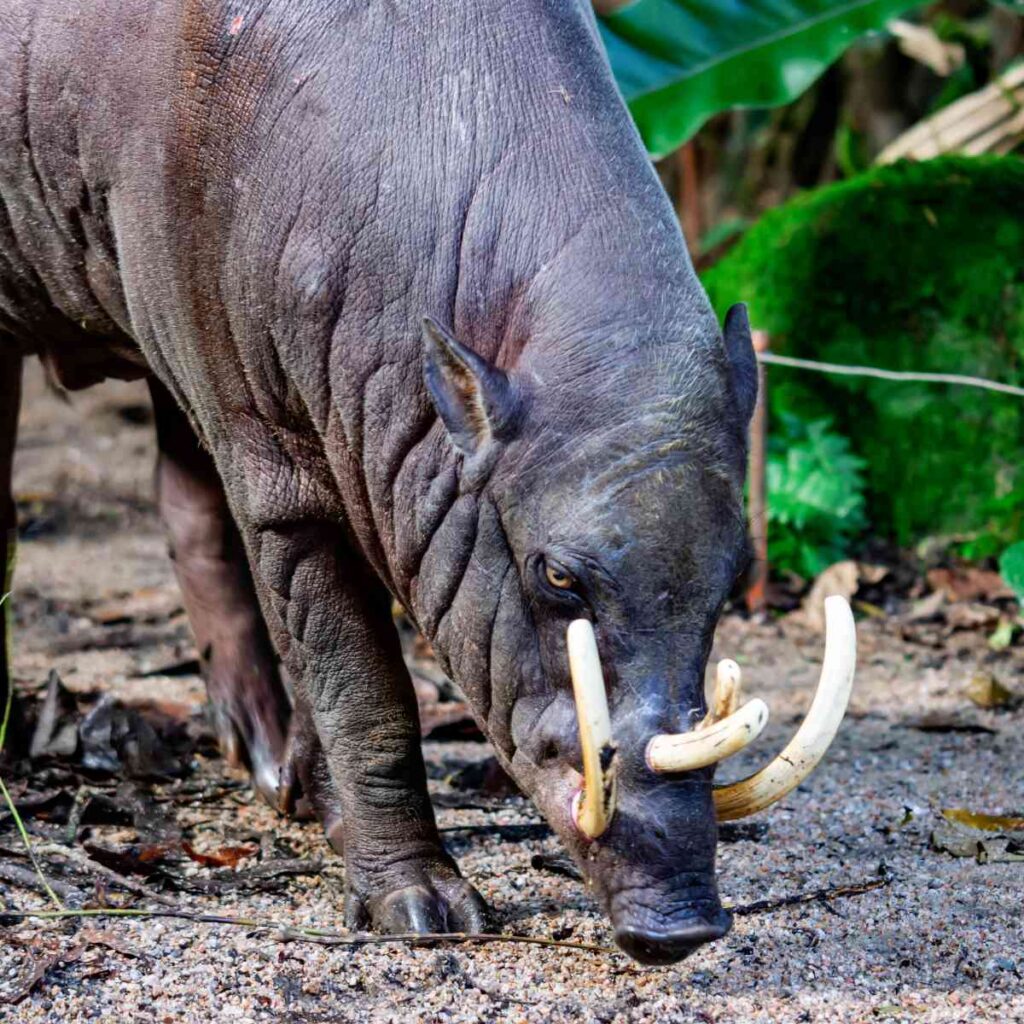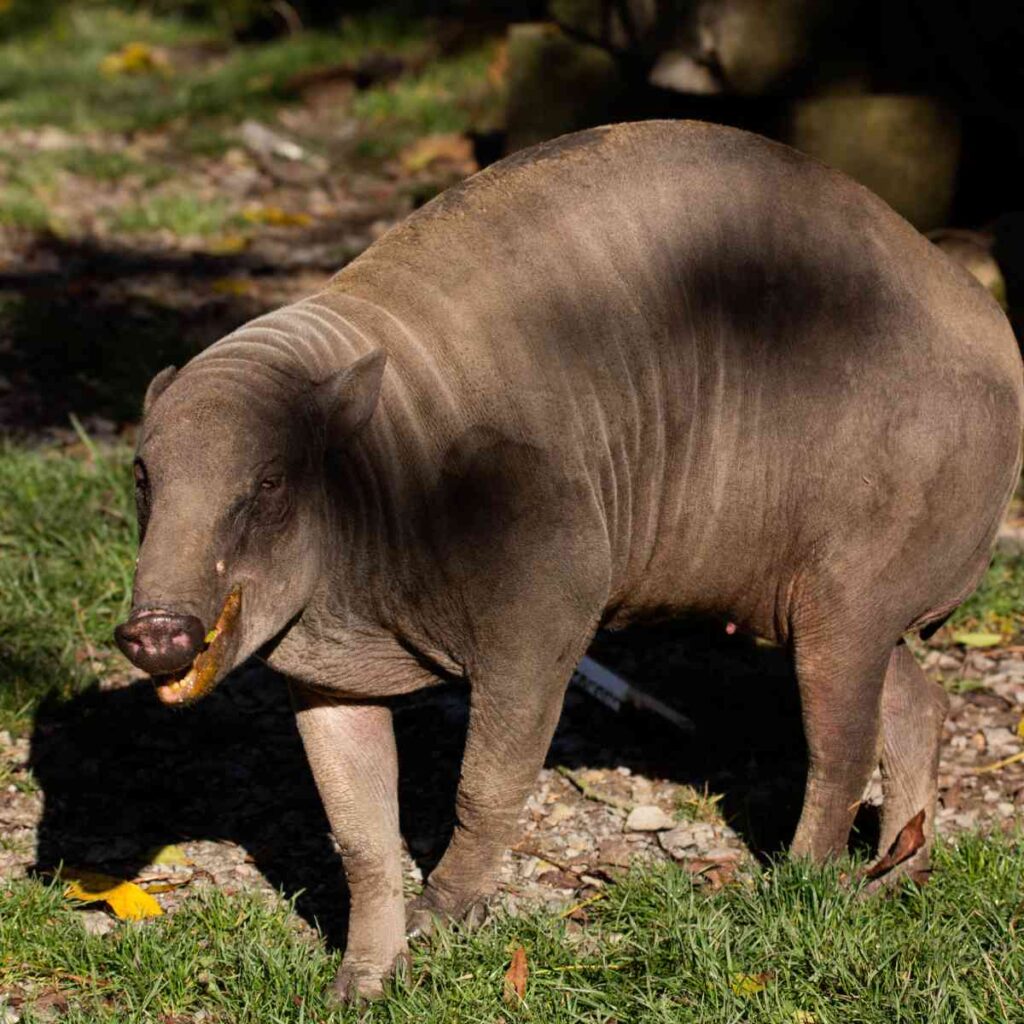Last Reviewed and Updated on January 31, 2023
The babirusa is a peculiar species of wild pig found in Indonesia. They are known for their distinctive tusks and curious habits. Let’s explore some interesting facts about babirusa and what makes it so special.

About Babirusa
Babirusas, are a species of wild pig found in the tropical forests of Indonesia, specifically the islands of Sulawesi, Togian, Sula, and Buru. Their preferred habitats are tropical rainforests along river banks.
There are four known living species of babirusa;
- Buru babirusa also known as the hairy or golden babirusa
- Bola Batu babirusa
- North Sulawesi babirusa
- Togian babirusa
They are terrestrial animals and are most active during the day.
They have a distinctive appearance, with a long snout and curly tusks. There are slight differences in tusk length, shape, and size, as well as coat color, between different species of babirusa.
Babirusas are omnivorous, and their diet consists of various fruits, roots, and invertebrates. They also consume small vertebrates such as reptiles and birds.
Female babirusa typically gives birth to litters of one or two piglets, which are cared for by the mother until they are old enough to fend for themselves.
Facts About Babirusa
With their peculiar appearance and interesting behavioral habits, these animals are fascinating species to learn about. Read on to find out some of the coolest facts about babirusa.
1. Female babirusa either have small tusks or none at all

One of the more prominent features of all babirusa species is their curved tusks, but only males have large tusks. Females either have very small tusks or the tusks are completely absent.
2. The name babirusa means deer pig
The name comes from Malay babi rusa, babi translates to pig and rusa to deer.
3. They can stand on their hind legs
The babirusa is known to stand on its hind legs in order to reach leaves higher on the trees. They also stand on their hind legs if they fight with another babirusa; they can keep standing on their hind legs for about 2 minutes at a time.
4. They are great swimmers
They might not look the part, but they are, in fact, excellent swimmers who can swim long distances.
5. Make babirusas tusks grow continuously
Their tusks, which are their canine teeth, continue to grow throughout their life. They are the only mammal with vertically growing canine teeth. There is some wear and tear as their tusks get worn down with everyday activity. As they grow, they also become curled back.
6. Their tusks can sometimes kill them
Although this is rare because their tusks curl back as they grow, sometimes they may grow back straight into their skulls, ultimately killing them.
7. They are depicted in cave drawings
Pleistocene cave art from Sulawesi, Indonesia, exhibits a painting of a babirusa. Dated at least 35.4 thousand years ago, it is one of the earliest dated figurative depictions worldwide (source).
8. Male babirusa don’t fight with their tusks
It was long speculated that the tusk was used for fighting, but a study on the aggressive behavior of babirusa showed this isn’t the case. The exact purpose of their tusks remains a mystery.
Most confrontations end peacefully, with warning signs and submission of one babirusa. When they fight, they do so by “boxing”; pushing and showing to push the opponent off balance. Tusks play little or no part.
9. Males are usually solitary, and females may live in groups
Males are generally solitary and rarely seen in groups of two or three. Females may form groups with other females in limited numbers (source).
10. All species of babirusa were first thought to be just one species
Despite many differences, all members of the genus were considered part of a single species, the babirusa, before being split into four different species.
Love animals? You will love our list of the 100 weirdest facts about animals.
